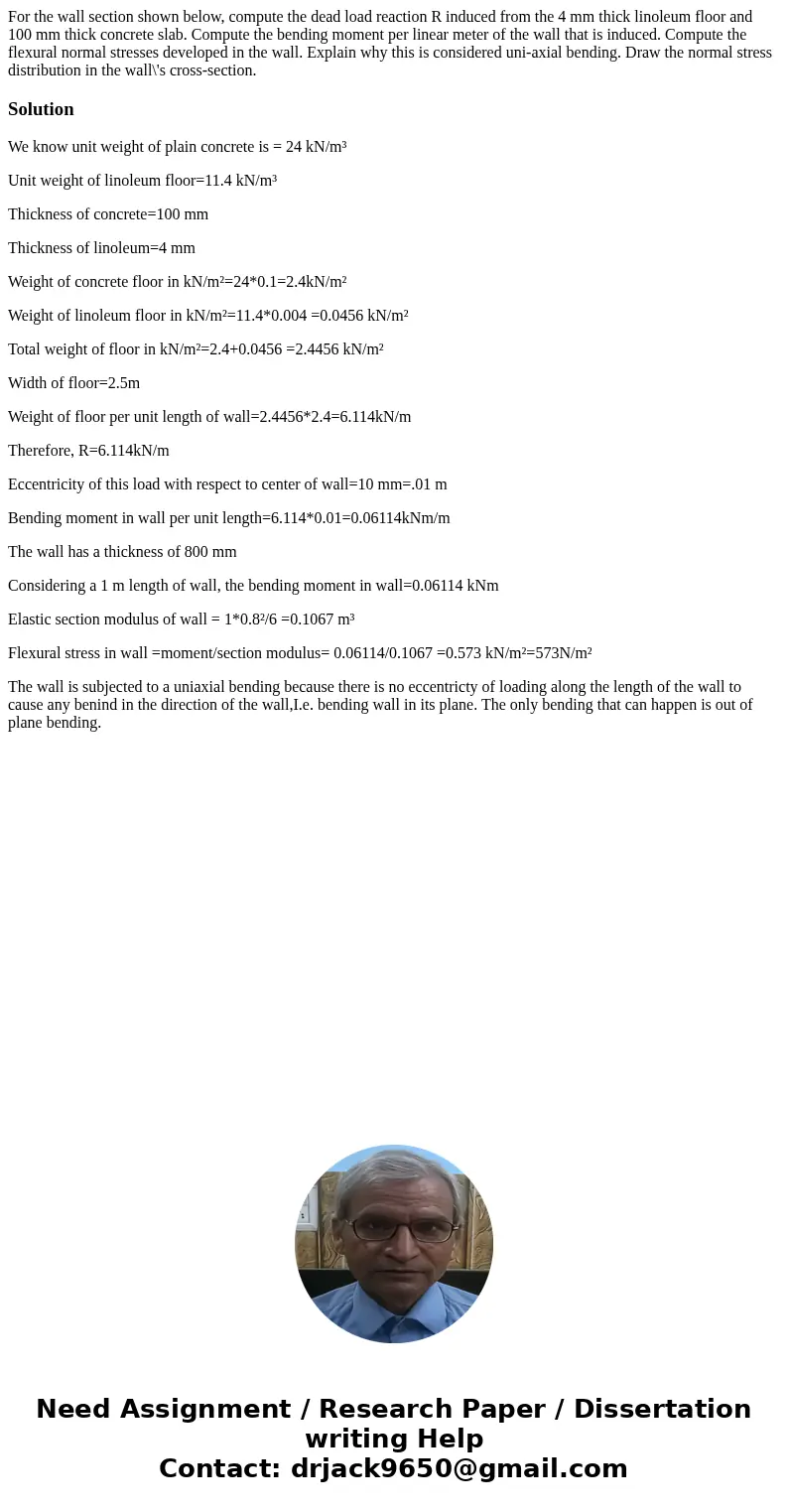For the wall section shown below compute the dead load react
Solution
We know unit weight of plain concrete is = 24 kN/m³
Unit weight of linoleum floor=11.4 kN/m³
Thickness of concrete=100 mm
Thickness of linoleum=4 mm
Weight of concrete floor in kN/m²=24*0.1=2.4kN/m²
Weight of linoleum floor in kN/m²=11.4*0.004 =0.0456 kN/m²
Total weight of floor in kN/m²=2.4+0.0456 =2.4456 kN/m²
Width of floor=2.5m
Weight of floor per unit length of wall=2.4456*2.4=6.114kN/m
Therefore, R=6.114kN/m
Eccentricity of this load with respect to center of wall=10 mm=.01 m
Bending moment in wall per unit length=6.114*0.01=0.06114kNm/m
The wall has a thickness of 800 mm
Considering a 1 m length of wall, the bending moment in wall=0.06114 kNm
Elastic section modulus of wall = 1*0.8²/6 =0.1067 m³
Flexural stress in wall =moment/section modulus= 0.06114/0.1067 =0.573 kN/m²=573N/m²
The wall is subjected to a uniaxial bending because there is no eccentricty of loading along the length of the wall to cause any benind in the direction of the wall,I.e. bending wall in its plane. The only bending that can happen is out of plane bending.

 Homework Sourse
Homework Sourse